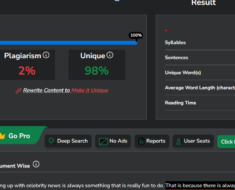Peer-to-peer (P2P) lending is a contemporary financial approach influencing how individuals invest and borrow. This article examines what P2P lending entails, how it operates, its advantages and disadvantages and the reasons behind its increasing adoption as an alternative to traditional banking methods.
Understanding P2P Lending
P2P lending is a decentralized lending and borrowing system conducted through online platforms; these directly facilitate connections between individuals or businesses searching for funding and investors willing to provide it, effectively eliminating the need for conventional intermediaries. A key feature of P2P lending is the direct financial relationship between borrowers and lenders. Moreover, this financial model is now readily accessible through a mobile application, enhancing convenience for users.
The Process of P2P Lending
P2P lending platforms serve as digital marketplaces that bring together borrowers and lenders. The following section outlines how the process develops:
- Borrower registration: Borrowers apply on the P2P lending platform, providing details relating to creditworthiness, loan amount and its intended purpose.
- Lender registration: Investors (or lenders) register on the same platform, specifying the amount available to lend alongside their risk tolerance.
- Loan listings: Borrower applications are listed on the platform without revealing personal information, allowing investors to review them; investors can diversify their investments by distributing funds across multiple borrowers.
- Interest rates: These are determined based on the borrower’s creditworthiness and loan terms; P2P platforms frequently assign a risk rating to aid lenders in assessing the risk associated with each loan.
- Funding: Once a borrower’s loan application receives full funding from investors, the funds are directly transferred to the borrower.
- Repayment: Borrowers repay the loan with interest over time – these repayments are distributed to the investors through the platform.
The Inherent Advantages of P2P Lending
- Diversification: Investors can spread investments across multiple loans, thereby reducing risk.
- Higher returns: P2P lending often provides higher interest rates than traditional savings accounts or certificates of deposit (CDs).
- Accessibility: Borrowers not meeting the requirements of traditional banks gain access to a potential financing source.
- Lower costs: Reduced overhead expenses enable borrowers to secure loans at lower interest rates.
The Fundamental Disadvantages of P2P Lending
- Risk: Like any investment, P2P lending carries the risk of loan default, where borrowers may fail to repay.
- Lack of regulation: P2P lending is subject to fewer regulatory constraints than traditional banking, potentially introducing risks for investors.
- Illiquidity: Most P2P loans extend over several years, necessitating investors to be comfortable with their capital being tied up for extended durations.
Factors Driving the Popularity of P2P Lending
- Filling a gap: P2P lending addresses a void left by traditional banks, offering financial support to those not qualifying through conventional avenues.
- Technological advancements: Technology has enhanced the efficiency, user-friendliness and security of P2P lending, attracting more participants.
- Potential for returns: Investors are enticed by the prospect of superior returns compared with traditional investment options, particularly in a low-interest-rate environment.
- Transparency and control: P2P lending offers transparency regarding the allocation of funds, allowing investors to select individual loans for funding.
Concluding Remarks
The P2P revolution is reshaping the landscape of borrowing and investing; by directly connecting individuals and businesses, it offers accessibility, efficiency and potential for enhanced returns. Nonetheless, it is vital to acknowledge associated risks and make informed decisions; as P2P lending continues to evolve, it represents a noteworthy financial innovation worth exploring.






